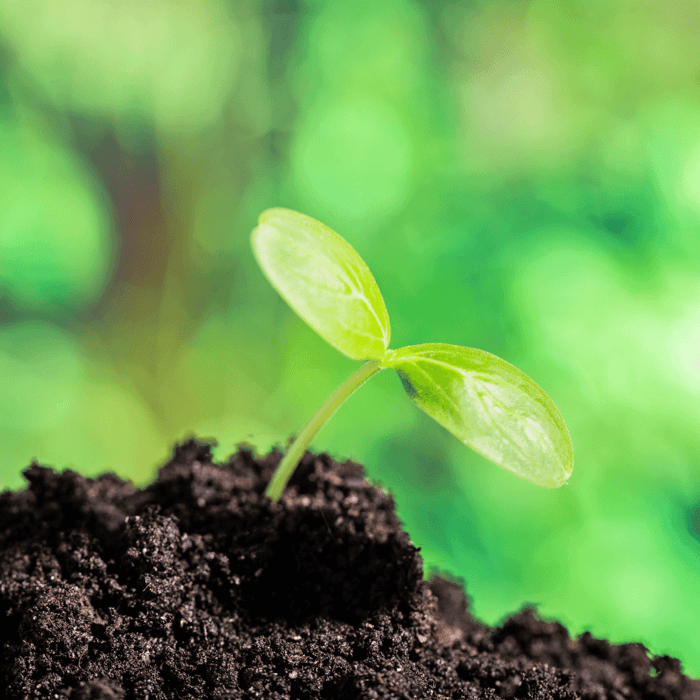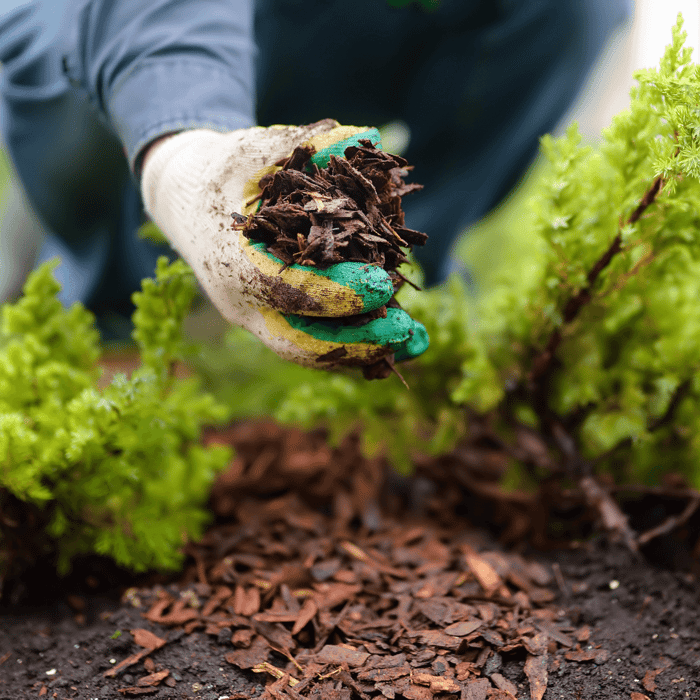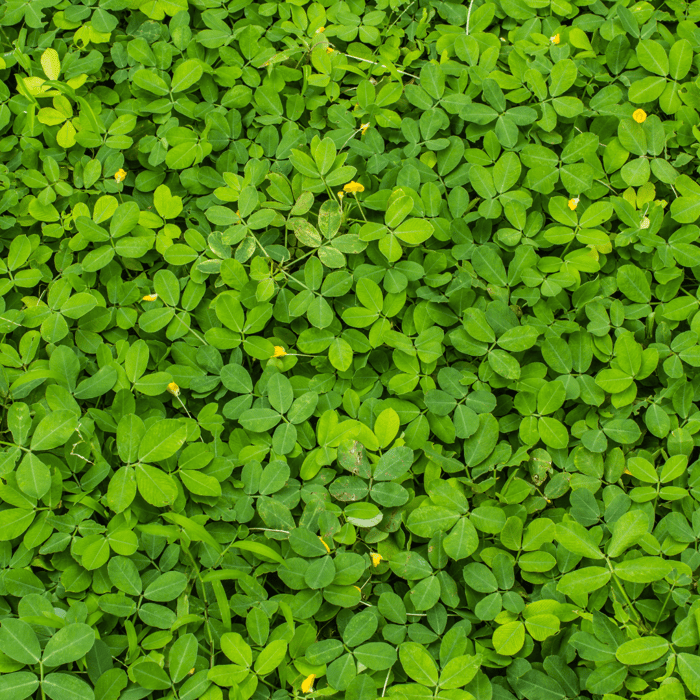Soil is the foundation of every garden. Without it, plants cannot grow and thrive. As a gardener, you understand the importance of good soil quality, but do you know just how critical it is? How is your soil? Do you know how to improve soil for gardening?
Soil quality impacts everything from plant growth to pest resistance, and even affects the taste of your fruits and vegetables. But what exactly does "good soil quality" mean?
It goes beyond simply making sure your garden bed isn't full of rocks or clay. High-quality soil has an optimal balance of nutrients, organic matter, and microorganisms that work together in harmony to support plant growth.
Importance of Soil Quality for Gardening
The benefits of healthy soil are numerous. For one thing, it helps plants grow bigger and stronger in
your gardens. Healthy roots are able to penetrate deep into the soil to access vital nutrients like nitrogen, phosphorus, and potassium.
This means healthier plants that are more resistant to
pests and diseases. Additionally, good soil quality makes for a more resilient garden overall.
In times of drought or other environmental stressors, healthy soils can retain water better than compacted or degraded soils. Additionally, healthy soils can help prevent erosion by holding onto topsoil where it's needed most.
High-quality soils promote biodiversity both above ground and below ground. A diverse mix of microorganisms in the soil helps break down organic matter into usable nutrients for plants while also keeping harmful pathogens in check.
Vegetable Seed Vault Kit | 35 Variety Pack

$29.95
$49.95
Ultimate Survival Seed Vault: 16,000+ Non-GMO Heirloom Vegetable Seeds for Emergency Preparedness Introducing the Seed Vault Kit, your all-in-one solution for emergency preparedness and sustainable gardening. This premium seed kit contains over 16,000 non-GMO, Heirloom, Non-Hybrid, and Open Pollinated seeds,… read more
Brief Overview of the Benefits of Improving Soil
Improving soil quality is all about maximizing these benefits by creating ideal growing conditions for
your plants. The first step is understanding your current soil composition so you can pinpoint areas that need improvement. From there, there are many ways to enhance your garden's foundation:
- Add organic matter such as compost or manure
- Mulch around plants to retain moisture
- Use
cover crops to prevent erosion and add nutrients back to the soil
- Practice crop rotation to maximize nutrient uptake
- Use a balanced fertilizer to boost growth and prevent nutrient deficiencies
By implementing these strategies, you can create a garden that not only looks beautiful but is also more productive, healthy, and sustainable for years to come.
The Dirt on Soil: Understanding Soil Composition
When it comes to gardening, the quality of your soil can make or break your crops. It's important to understand the composition of your soil in order to improve its quality and ensure healthy plant growth.
Soil is made up of three main components: sand, silt, and clay. Each component plays a vital role in soil quality and plant growth.
Uncovering Sand
Sand is the largest particle size among the three components. It has a gritty texture and allows for good drainage, which can be beneficial for some plants.
However, too much sand can result in a lack of water retention and nutrient availability for plants. In fact, sandy soils are notorious for being deficient in many essential nutrients that plants need to thrive.
Sifting Through Silt
Silt is the intermediate particle size among the three components. It has a smooth texture and provides good water retention properties while still allowing for some drainage. Silt also tends to be rich in nutrients that are important for plant growth such as phosphorus and potassium.
Clay - The Heavy Hitter
Clay particles are the smallest among the three components but they pack a heavy punch when it comes to soil quality. Clay soils have excellent water retention properties but poor drainage capabilities which can lead to waterlogging issues if not managed properly. Additionally, clay soils tend to be high in nutrients such as calcium, magnesium, and iron.
The Right Balance
The ideal soil composition varies depending on what you're growing but generally speaking, having a balanced mix of sand, silt, and clay is optimal for most crops. This balance allows for good water retention while also providing adequate drainage capabilities along with ample nutrient availability.
The Takeaway:
Understanding soil composition is key when it comes to gardening. By knowing the characteristics of each component, you can make informed decisions on how to improve soil quality and ensure successful plant growth. Remember that a balanced mix of sand, silt, and clay is best for most plants but be sure to test your soil and adjust accordingly for optimal results.
Testing Soil Quality
Gardening can be a rewarding experience, but it's important to remember that plants are only as healthy as the soil they're growing in. You wouldn't eat food from a dirty kitchen, so why would you expect your plants to thrive in poor-quality soil? That's why testing your soil before making any changes is absolutely crucial.
The Importance of Testing Soil Before Making Any Changes
Testing the soil before making any changes will allow you to determine what nutrients are already present in the soil and what might be lacking. This will help you avoid over-fertilizing or adding unnecessary supplements, which can actually harm your plants more than help them. Furthermore, testing the soil will give you an idea of its pH level.
Different plants thrive at different pH levels, and planting something that requires more acidic or alkaline soil than what is currently present can lead to stunted growth or even plant death. Ultimately, taking the time to test your soil will save you time and money in the long run by ensuring that you're only adding what your plants truly need for optimal growth and health.
Gardening Gifts 70-Variety Seed Pack: 35 Herb & 35 Flower Seeds Plant Gifts For Sale
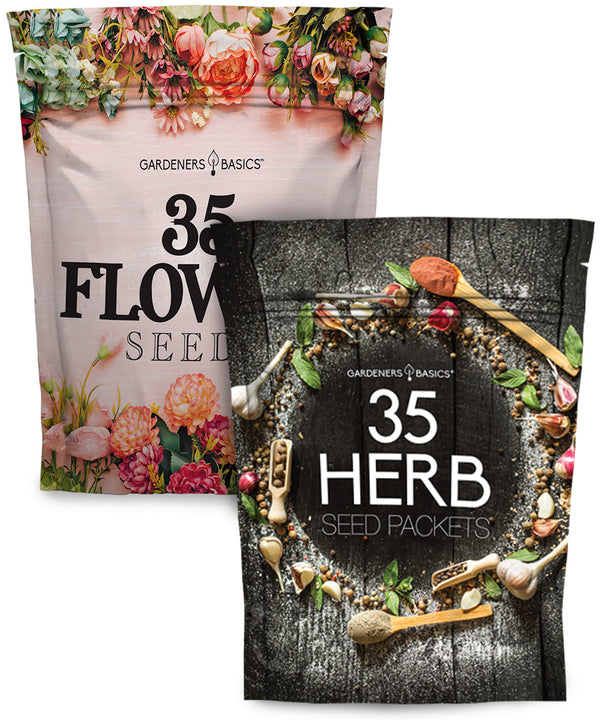
$55.95
$99.95
70-Variety Seed Pack: 35 Premium Herb Seeds & 35 Blooming Wildflower Seeds - Perfect for Gardeners & Landscaping Enthusiasts Introducing the ultimate 70-Variety Seed Pack, a complete gardening gift that brings the joys of growing right to your doorstep! Perfect… read more
Different Methods For Testing Soil Quality (Home Test Kits, Professional Lab Tests)
Luckily, there are several different options available for testing your garden's soil quality. The two most common methods are home test kits and professional lab tests.
Home test kits can be found at most hardware stores or online retailers. These kits usually come with everything you need to take a sample of your garden's soil and perform some basic tests for nutrients such as nitrogen, phosphorus, and potassium.
Some kits even include pH tests as well. While these kits are convenient and affordable (usually around $10-20), keep in mind that they may not be as accurate as professional lab tests.
Professional lab tests, on the other hand, are conducted by trained professionals in a laboratory setting. These tests will analyze your soil's nutrient levels and pH in much greater detail than home test kits can.
They also often provide recommendations for specific fertilizers or amendments to add to your garden's soil based on the results of the test. While these tests are more expensive than home test kits (usually around $50-100), they provide a more comprehensive analysis of your soil and can ultimately lead to better plant growth and yields.
Testing your garden's soil before making any changes is crucial for ensuring healthy plant growth and avoiding wasted time and money on unnecessary supplements or fertilizer. Whether you choose to use a home test kit or opt for a professional lab test, taking this step will pay off in the long run.
Organic Matter and Composting
The Role of Organic Matter in How to Improve Soil for Gardening
Listen up, fellow gardeners! If you want to get serious about improving your soil, then organic matter is your new best friend. This stuff is the key to unlocking the full potential of your garden.
Let me explain why. First of all,
organic matter helps to regulate soil temperature and retain moisture.
This means that it can provide a more stable environment for plants to grow in, especially during periods of drought or extreme heat. It also helps to reduce erosion by binding soil particles together.
But that's not all! Organic matter is also a powerhouse when it comes to providing essential nutrients for plants.
As it decomposes, it releases important elements like nitrogen, phosphorus, and potassium into the soil. These are all key players in promoting healthy growth and strong yields.
How to Create Compost at Home
Now that you understand just how important organic matter is for improving soil quality, let's talk about how you can create your own compost at home. First things first: start collecting those kitchen scraps! Vegetable peels, fruit cores, coffee grounds - anything that can break down over time will do the trick.
Avoid adding any meat or dairy products as they can attract unwanted pests. Next up, you'll need a compost bin.
This can be as simple as a pile on the ground or as fancy as an expensive rotating drum system. The key is to find something that works for your space and budget.
Once you've got your bin set up and filled with kitchen scraps, it's time to let nature do its thing. Over time, microorganisms will break down the organic material into nutrient-rich compost that can be added back into your garden beds.
Insinuation: "Turn Your Kitchen Scraps Into Black Gold" Trust me when I say that creating your own compost is a game-changer for your garden.
Not only is it an affordable and easy way to improve soil quality, but it also helps to reduce food waste and promote a more sustainable lifestyle. So go ahead, turn those kitchen scraps into black gold, and watch your garden thrive like never before!
Mulching and Cover Cropping: Blanket Your Garden with Love
Mulching and cover cropping are two of the most effective ways to improve soil health. Mulch is a layer of organic material that is spread over the surface of the soil, while cover crops are planted to grow on top of the soil.
Both practices help retain moisture, reduce erosion, and suppress weeds. But there’s more to it than that.
The Benefits of Mulching
Mulching is one of those things that can make a huge difference in your garden with little effort. And yet, so many gardeners overlook it in favor of more “exciting” activities like planting or harvesting. But here's my advice: stop what you’re doing and go get some mulch.
By covering the soil with mulch, you’re creating a protective barrier that keeps moisture from evaporating too quickly. This not only helps plants thrive during dry spells but also reduces water usage overall.
Learning how to mulch your garden isn't hard either!
Additionally, mulch suppresses weeds by blocking sunlight from reaching the seeds and prevents erosion by holding everything together during heavy rains. But wait, there’s more!
As mulch breaks down over time (and it will), it adds valuable organic matter to the soil which improves its structure and fertility. And if you’re using an organic type of mulch like shredded leaves or grass clippings, you’ll also be adding nutrients into the mix as it decomposes.
The Benefits of Cover Cropping
Cover crops serve much the same purpose as mulch – they keep weeds at bay and prevent erosion – but they also do something else entirely: they fix nitrogen in the soil. Some plants have a unique ability to pull nitrogen out of thin air (well actually out of their roots' proximity) which then becomes available for other plants upon decomposition or tillage (if used properly). This process is called nitrogen fixation and it's a game-changer for soil health.
One popular cover crop, clover, is known for its ability to fix nitrogen as well as adding organic matter to the soil. Other cover crops like rye or buckwheat can break up compacted soil with their deep roots and help prevent nutrient leaching.
When Mulching and Cover Cropping Don't Work
Now, I’m not saying that mulching and
cover cropping will solve all your gardening problems. In some situations, they might even make things worse. For example, if you have a pest or disease problem in your garden (such as root rot), mulching can create a warm, moist environment that encourages further growth of the unwanted organism.
Additionally, some plants and
heirloom seeds may not benefit from being covered up with mulch or compete poorly with the cover crop. And if you live in an area with high humidity or rainfall (like a tropical climate) then too much moisture retention could be problematic.
The Bottom Line
Despite these potential drawbacks, I still believe that mulching and cover cropping are two of the best
things you can do for your garden – especially if you’re looking to improve soil health without resorting to synthetic fertilizers or pesticides. So go ahead, blanket your garden with love!
Seed Safe Survival Seed Kit - 35 Variety Pack
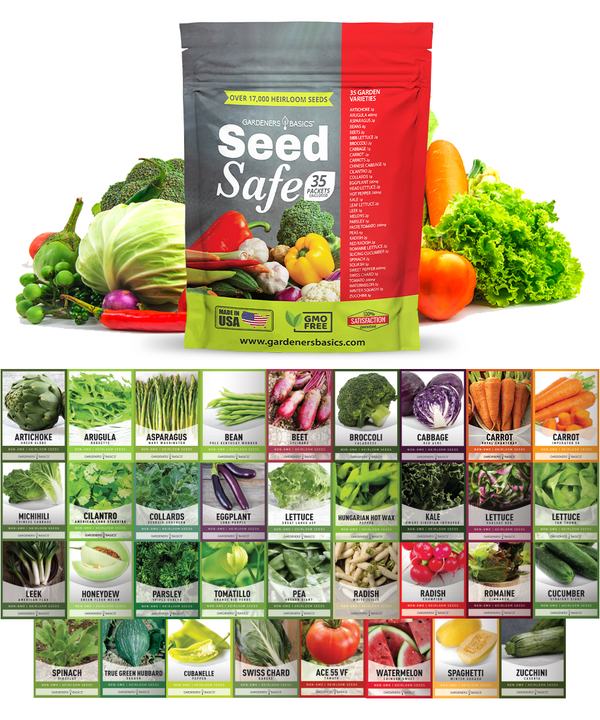
$29.95
$49.95
Seed Safe Survival Seed Kit: The Ultimate Heirloom Collection for Self-Sufficient Gardening Introducing the Seed Safe - 35 Varieties of Heirloom Vegetable, Herb, and Fruit Seeds, the ultimate solution for gardeners who want to secure a bountiful future harvest. This… read more
Using Fertilizers Effectively
Synthetic vs Organic Fertilizers: The Great Debate
When it comes to improving soil quality with fertilizers, there is a great debate about using synthetic or organic options. Synthetic fertilizers are made from chemicals and can provide quick results. However, they can also harm the environment and may lead to nutrient imbalances in the soil over time.
Organic fertilizers, on the other hand, are made from natural ingredients like compost and manure. They release nutrients slowly and improve soil health over time without harming the environment.
Personally, I am a strong advocate for using organic fertilizers for gardening purposes. Not only do they help create a healthier environment for plants to grow in, but they also have long-term benefits that extend beyond just nutrient uptake.
The Dos and Don'ts of Using Fertilizers
While organic fertilizers may seem like an obvious choice, using them effectively requires some knowledge and planning. Here are some dos and don'ts when it comes to using fertilizer:
- DO read labels carefully before applying fertilizer to your plants - DON'T apply too much fertilizer as it can cause root burn and damage your plants
- DO apply fertilizer at the right time of year when plants are actively growing - DON'T apply fertilizer when it's raining or windy as it can wash away or blow off-target
- DO mix your fertilizer into the soil thoroughly before planting By following these simple guidelines, you'll be able to use your fertilizer effectively without harming your plants or surrounding environment.
Types of Fertilizer
The Power of Compost
One of my favorite types of organic fertilizers is compost - aka "black gold." Compost is made from decomposed organic matter like food scraps and garden waste. It's rich in nutrients and helps improve soil structure, making it easier for roots to absorb nutrients and water.
To create your own compost, start collecting food scraps like fruit and vegetable peels, eggshells, and coffee grounds. You can also add yard waste like leaves and grass clippings.
Mix everything together in a compost bin or pile and let nature do the work! Over time, the organic matter will break down into nutrient-rich compost that you can use in your garden.
Other Organic Fertilizer Options
Compost isn't the only organic fertilizer option out there. You can also use things like bone or blood meal, fish emulsion, or kelp meal to add nutrients to your soil. These options are usually sold as dry powders that you can sprinkle onto the soil around your plants.
If you're looking for a synthetic option that's still relatively safe for the environment, consider using slow-release fertilizers. These types of fertilizers release nutrients over time instead of all at once, reducing the risk of nutrient imbalances or harmful runoff.
The Bottom Line
When it comes to choosing a fertilizer for your garden, there are plenty of options available - both synthetic and organic. While synthetic fertilizers may provide quick results, they often come with negative consequences for both plants and the environment in the long term while organic fertilizers help create a healthier environment for plants to grow in with long-term benefits.
Ultimately though it depends on what works best for you and your
gardening needs. In my opinion, using organic fertilizer is always better than synthetic since it has so many long-term benefits but ultimately the decision is yours!
Crop Rotation and Companion Planting: The Art of Playing God with Plants
Do you want to be a god of your garden? Do you want to manipulate the way plants grow, thrive, and reproduce?
You get to decide which plants should go where, when, and why. You get to optimize your soil's health and fertility.
You get to outwit pests and diseases. You get to harvest more yields than ever before.
But first, let's focus on crop rotation - the practice of changing the location of crops every season or every year. Why is it important?
Simple - it prevents the depletion of soil nutrients, reduces soil-borne diseases and pests, improves soil structure and texture, increases water retention and infiltration, boosts biodiversity above ground and below ground, and enhances crop yield quantity and quality. How does it work?
Well, each plant family has different nutrient requirements as well as different susceptibility or immunity to pests and diseases. By rotating crops from one family with those from another family in a specific order or cycle (e.g., corn -> beans -> tomatoes -> peppers -> broccoli), you can reduce the risk of pest infestation or disease build-up while replenishing the soil with diverse nutrients that each plant family offers.
Now let's talk about companion planting - the practice of growing two or more plant species together for mutual benefits such as nutrient exchange,
pest control, pollination facilitation, shade tolerance, weed suppression, etc. Why is it beneficial?
Because no plant is an island; all plants interact with one another above ground through chemical signals or physical cues.
Some plants get along well with others, while some don't. Some plants need more water than others, while some need more sunlight or space.
Some plants are allelopathic, meaning they release chemicals that inhibit the growth of nearby plants. Crop rotation and companion planting are not just fancy techniques for advanced gardeners; they are practical ways of mimicking nature's cycles and patterns.
By applying these methods in your garden, you can improve soil health over time, increase biodiversity and productivity, reduce reliance on external inputs such as fertilizers or pesticides, and create a harmonious ecosystem that benefits both humans and nature. Hopefully, you now know how to improve soil for gardening, so go ahead and play god with your plants - just remember to be humble and respectful towards the power of Mother Nature.
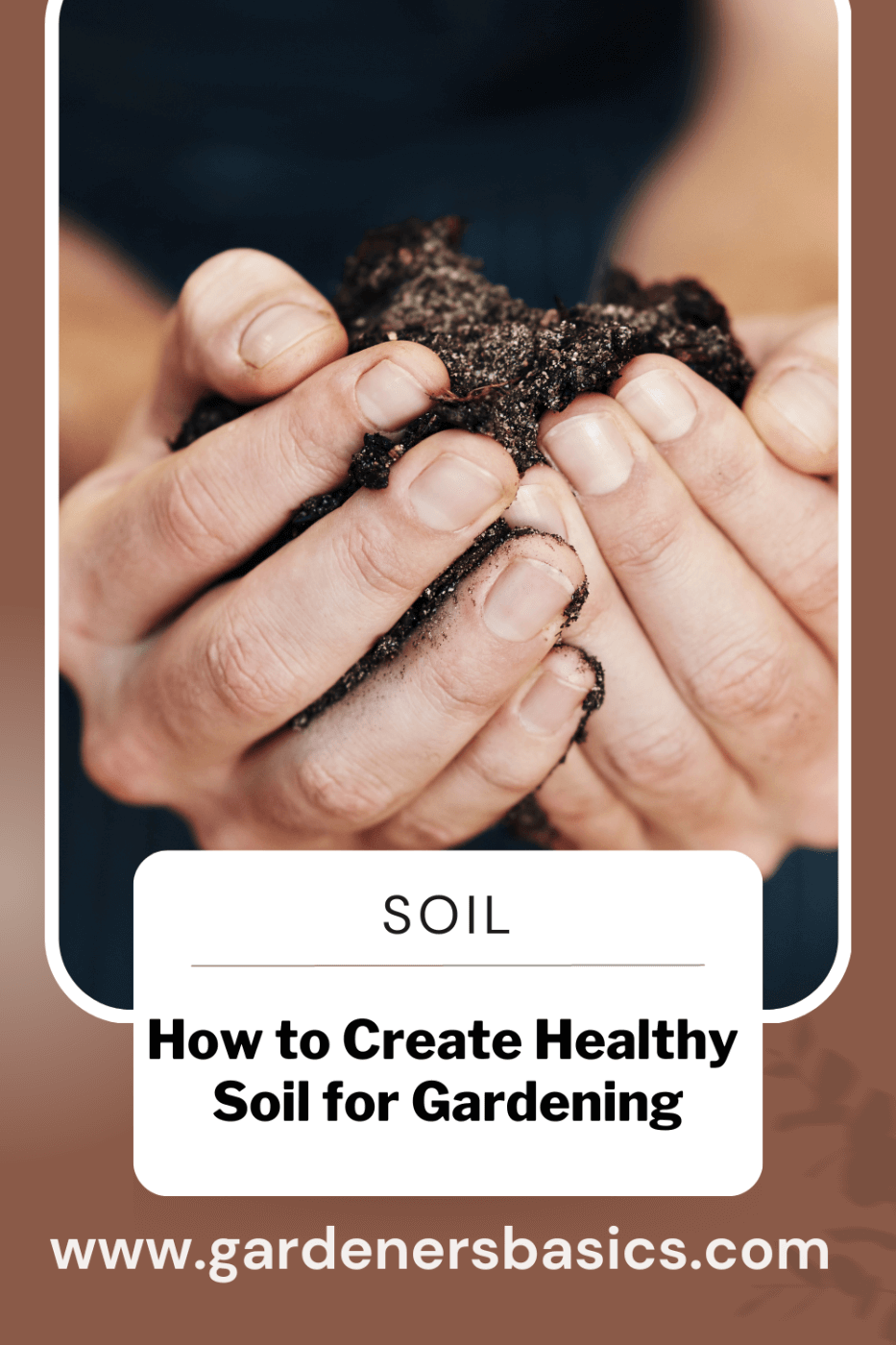 FAQ - How to Improve Soil for Gardening
FAQ - How to Improve Soil for Gardening
Why is it important to improve soil quality for gardening?
Improving soil quality is essential for healthy plant growth and a successful garden. Good soil provides plants with essential nutrients, supports root growth, and helps maintain an appropriate balance of moisture and air.
How can I determine the type of soil in my garden?
You can determine your soil type by examining its texture, which depends on the relative proportions of sand, silt, and clay particles. A simple test involves wetting a small amount of soil and rolling it between your fingers. Sandy soil will not hold its shape, while clay soil will be sticky and form a ribbon. Loam is a balanced mixture of the three particles and is considered ideal for gardening.
How can I improve the nutrient content of my soil?
You can improve your soil's nutrient content by adding organic matter like compost or well-rotted manure. This not only supplies essential nutrients but also improves soil structure and moisture retention. You can also use chemical fertilizers, but it's crucial to follow the recommended application rates to avoid harming plants.
What is the role of pH in soil improvement?
Soil pH affects nutrient availability and influences the growth of beneficial microorganisms. Most plants prefer a pH between 6.0 and 7.0. You can test your soil pH using a home test kit or by sending a sample to a professional lab. To raise pH, apply lime; to lower it, use sulfur or aluminum sulfate.
How can I improve soil drainage?
To improve soil drainage, consider adding organic matter such as compost, which can help break up heavy clay soils and improve water infiltration. In extreme cases, you may need to create raised beds or install drainage systems to remove excess water from the soil.
How often should I amend my garden soil?
The frequency of soil amendments depends on the specific needs of your garden. In general, it's a good idea to add organic matter like compost at least once a year, preferably before planting or during the fall. Be sure to monitor your soil's nutrient levels and pH, and make adjustments as needed.
Can I use a mulch to improve my soil?
Yes, mulch can help improve your soil by adding organic matter, conserving moisture, suppressing weeds, and regulating soil temperature. As the mulch decomposes, it slowly releases nutrients into the soil. Use organic mulches such as wood chips, shredded leaves, or straw for the best results.
Are there any plants that can help improve my soil?
Yes, certain plants can help improve your soil. For instance, cover crops like legumes (clover, beans, peas) can fix nitrogen from the air and add it to the soil. Deep-rooted plants like daikon radish can help break up compacted soil and improve its structure. Including such plants in your garden rotation can contribute to long-term soil health.
How can I improve sandy soil?
To improve sandy soil, add organic matter like compost, well-rotted manure, or leaf mold. This will help increase water retention and nutrient availability. You may also want to add clay or loam to the sandy soil to improve its texture, but do so gradually to avoid creating a hard, compacted layer.
Can earthworms help improve soil quality?
Earthworms are excellent for soil improvement, as they help break down organic matter and mix it with mineral particles. They create tunnels that improve aeration and drainage, and their excretions (castings) are rich in nutrients. Encourage earthworms by adding organic matter and minimizing the use of chemical pesticides.
What is no-till gardening, and how does it benefit soil quality?
No-till gardening involves avoiding the traditional practice of turning over the soil each year. Instead, you add organic matter to the soil surface and let earthworms, insects, and microorganisms break it down. This method helps maintain soil structure, reduces erosion, and supports a healthy soil ecosystem.
How do I know if my soil has enough nutrients?
A soil test is the best way to determine if your soil has sufficient nutrients. You can purchase a soil test kit or send a sample to a professional lab. The results will indicate nutrient levels and provide recommendations for any necessary amendments.
Can I use biochar to improve my soil?
Yes, biochar is a form of charcoal made from organic materials and can improve soil quality by increasing water retention, and nutrient availability, and supporting microbial life. It also helps sequester carbon, making it an environmentally friendly option. Be sure to mix biochar thoroughly with the soil or compost before applying it to your garden.
How can I improve soil fertility without using chemical fertilizers?
You can improve soil fertility without chemical fertilizers by using organic amendments like compost, manure, or worm castings, which provide essential nutrients for plant growth. Other options include growing cover crops, practicing crop rotation, and applying organic mulches. These methods help maintain a healthy soil ecosystem, which in turn supports plant health and productivity.



 FAQ - How to Improve Soil for Gardening
FAQ - How to Improve Soil for Gardening


